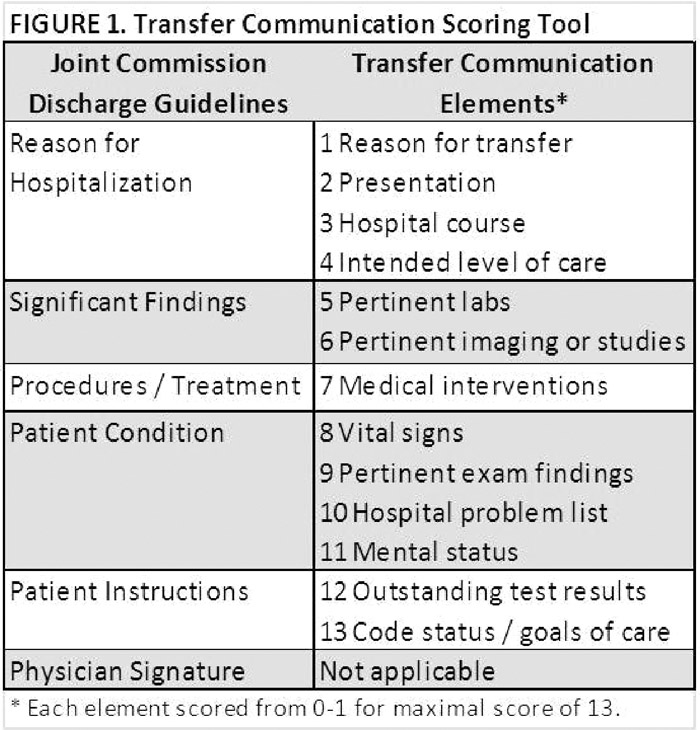Background:
A growing body of literature has characterized deficiencies and recommended best practices in communication at the time of hospital discharge for adult medicine patients. However, communication practices around interhospital transfers have not been rigorously assessed in this patient population. We characterized communication practices and explored the association between communication at the time of interhospital transfer and the occurrence of a posttransfer adverse event (PTAE).
Methods:
Medical records for all patients directly transferred from an outside hospital to a general medical floor on the internal medicine hospitalist service at a 500‐bed academic medical center from October 2010 through September 2011 were reviewed for the occurrence of a PTAE. A PTAE was defined as escalation to an ICU setting or death within 24 hours of admission. PTAE patients were then matched with control patients admitted to the same hospitalist service during the study period based on age, sex, and transfer distance (Table 1). A communication best‐practices scoring tool was developed based on the elements of the Joint Commission guidelines for hospital discharge communication and revised based on a pilot study to optimize internal consistency (Fig. 1). Audio recordings of interhospital phone conversations between sending and accepting physicians prior to patient transfer were scored by a blinded investigator based on adherence to the communication scoring tool.
Results:
Four hundred twenty‐five patients were directly admitted in transfer during the study period. Nineteen of these patients (4.5%) experienced a PTAE. Four of 19 PTAE patients and 1 of 19 control patients were excluded for missing or truncated recorded phone calls. The Cronbach's alpha coefficient for the revised tool was 0.724. The study was designed to have >90% power to detect a 2‐point difference in communication scores at a 0.05 significance level. Mean communication scores between PTAE and control groups did not differ significantly (Table 1).
Conclusions:
Communication around interhospital transfer appears suboptimal compared with an empirically developed set of standard communication elements. However, posttransfer adverse events were not associated with adherence to these standards.


